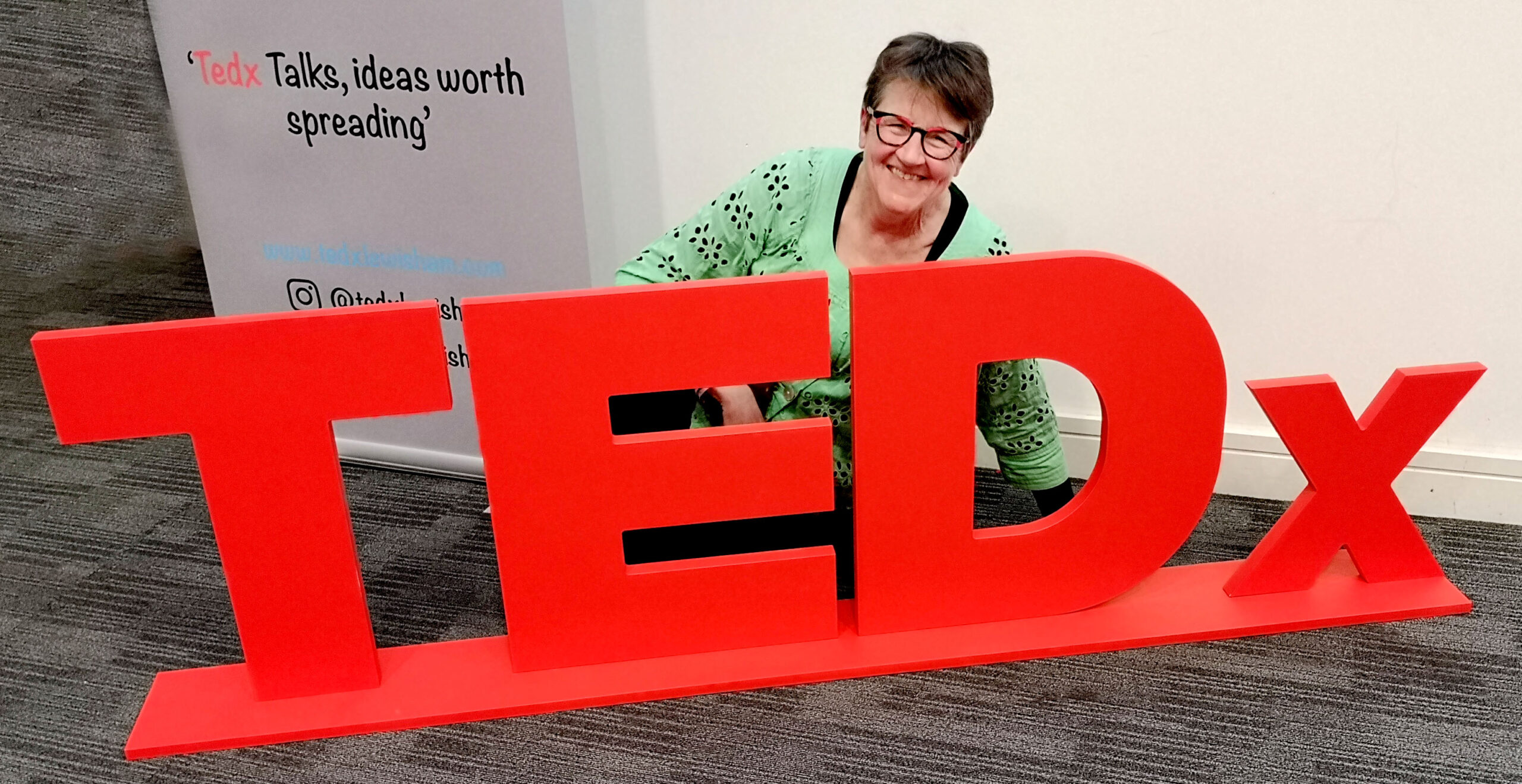Claim your voice – women speaking online
Women are half the world’s population, but they are not half the world’s public voice. Globally, according to Bizzabo research of 60,000 event speakers in 56 countries, just one in three are women. Women speaking online need to claim their voice and share their ideas.
For myriad complex reasons from being told we have no right to speak, to perfectionism, impostor syndrome and risk aversion, women are not taking up opportunities to speak. And the avoidance seems to be amplified online where women are often interrupted, spoken over or simply ignored by male counterparts.
If women want to step out of their comfort zone, they need to find their voice and become more visible. To achieve this online, we need to embrace the three essentials of communication – Confidence, Connection and a message that drives Change – in ways that work for us.
Confidence
In life, and as speakers and presenters, women struggle with confidence more than men. And having endured centuries of ‘put-downs’, it’s hardly surprising! Almost 3,000 years ago, Odysseus’ son Telemachus told his mother, Penelope, that speaking in the public forum is his responsibility and that she should return to her quarters to concentrate on her own work, the loom and the distaff.
In 1988, Punch published a cartoon by Riana Duncan depicting five men and one woman sitting in an office meeting. Miss Triggs makes a suggestion. The chairman replies: “That’s an excellent suggestion Miss Triggs. Perhaps one of the men here would like to make it.”
Such evidence is borne out in the annual McKinsey and Lean In Women in the Workplace report, which in 2019, found that half the women surveyed had experienced being interrupted or spoken over and two in five referenced others taking credit for their ideas.
Hardly surprising, then, that women are reluctant to speak. Yet, online, more than being in the same room as our audience, we need to bring confident energy to the screen so that our audience can relax and connect with us and what we’re saying.
Ready for your close up?
Women speaking online can feel challenged by the format and reluctant to speak. As you look at a screen and see everyone’s face staring back at you, it can feel intimidating. So, we need to be happy with how we look and show ourselves to best advantage.
When you go online, it’s easy to overlook your familiar surroundings, but your computer’s camera and mic will relay everything in range. Check what your audience will see and hear and make sure it’s what you want them to see and hear.
Think about being online as having a close up. You’re on the small screen and the camera will pick up every detail, expression and gesture. Is your lighting setting you off to best advantage so that you’re not plunged into shadow, dazzled by sunshine or distorted by reflections bouncing off your face or glasses if you wear them? I’m often asked about clothes and I recommend comfortable and appropriate for your audience. Block colours can reinforce a look of confident professionalism.
Keep calm when speaking online
Relying on technology can sometimes feel like working with children and animals. In spite of doing all the appropriate tech checks, things can still go wrong. And people accept that this can happen. What’s important is that you handle it calmly and efficiently, explaining what’s happening; and even better, invite a participant to take care of the tech for you.
Show your confidence
Consider all the non-verbal ways you can convey confident energy online. Bear in mind that we can often only see small images of participants or even less if they have their webcams turned off. This makes it hard to read non-verbal cues so make them clear and deliberate:
- A genuine smile
- An open and stable posture that is relaxed and assured
- Dial down movement and gestures. Online, you’re on the small screen and big gestures that work in a large venue will overwhelm or fall off screen
- Steady eye contact and the correct positioning of your camera lens at just above eye level make you look open and sincere and keep any double chins at bay!
Connection
If you want to stand out and have your listeners remember your talk or presentation, you need to connect emotionally with them:
“They may forget what you said, but they will never forget how you made them feel”
Carl W Buehner
Answer their ‘What’s In It For Me?’
As the meeting host or presenter, it’s your responsibility to know what your listeners will value, ie answer their all-important ‘What’s In It For Me’ question – as quickly as possible – so that they have a reason to carry on listening. To achieve this, you need to know your participants, what makes them tick and what they want from you.
Given the propensity for women to be interrupted or talked over and the challenge of reading non-verbal cues online, it is particularly important to make sure everyone feels involved in the meeting and has a chance to speak if they want to. Lay down some clear etiquette ground rules. For instance:
- Ask participants to indicate their questions in the chat function
- Invite specific gestures from people wanting to speak, eg the hand wave on Zoom (or other in-platform symbols) or physically wave their own hand to attract the host’s attention
- Encourage participants to turn on their cameras so that people don’t go unseen unless it’s their choice
- Unmute and invite people, by name, to speak
‘You’ and ‘we’ are magic words
Use of ‘you’ helps strengthen the relevance of your talk or presentation and make your listeners feel involved. In the English language, ‘you’ power comes from being both singular – a personal connection through a one-to-one conversation – and plural, including everyone. ‘We’ is even stronger, giving the feeling of togetherness, teamwork and co-creation.
Share your story, not your screen
Storytelling comes into its own when speaking online. When we tell a relevant personal story, openly and honestly, our listeners can relate to us as people. Stories not only create connections, but they are both engaging and memorable:
“Engaging speakers share their message through stories. They can move an audience, even in
business settings, to feel, laugh or cry, and are memorable for all the right reasons”
Lyn Roseaman
In stark contrast, sharing your screen and wading through bullet points is neither engaging nor memorable and fast-track to losing your listeners. Prioritise relevant storytelling at every opportunity.
Change
In the words of John F Kennedy, “The only reason to give a speech is to change the world.” Speaking up at meetings and events is our opportunity to remain visible, explore and share change and start building our future.
Message for the moment
To stand out online, what you have to say needs to be new and on point. Start at the end of your presentation or meeting with how you want people to think, feel or act afterwards. Identify your message and only incorporate content that supports it. Check your favourite search engine to make sure your message fits the bill.
Make it memorable with a rhythmic and rhyming anchor phrase that captures the essence of your talk in ten words or fewer, eg ‘Home is where we start from’ (Aileen Evans) or ‘It’s the world’s thinnest notebook (Steve Jobs).
Make life easy for your audience
Zoom fatigue and Teams tedium are now part of our lives and our attention spans are short at the best of times. In our enthusiasm for a subject, it’s easy to say too much and overwhelm our listeners. Less is most definitely more online.
Adopt a clear structure, such as a timeline, pros & cons, heroine’s journey, etc. Break up your presentation into small ‘chunks’ of around five minutes each and top and tail each chunk with what you’ll cover and a keyword to sum it up. Signpost what you have to say so your audience has the ‘road map’ for your talk and it’s clear and easy to follow.
Support each other and interact at every opportunity when speaking online
In Zoom and Teams you can create breakouts. Dividing your audience into smaller groups and sending them to separate rooms where they can discuss a specific topic and report back to the main meeting engenders both energy and new ideas. Aiming to make some 70% of the time interactive (interspersed with short presentations) will make time online more dynamic, relevant and memorable.
If you feel that the gender dynamic is making some participants reluctant to speak up, breakouts can create an opportunity for people to come together and support each other.
Conclusion
Women are half the world’s population. Women speaking online is an important opportunity to claim their voice and be seen and heard, while preparing for a future where we will almost certainly need to shine online AND in physical locations, with a real audience in the same room.
For lots more practical tips and ideas to ace your speaking online, please enjoy my free download, ‘Now You’re Talking Online‘ or find my book, ‘Now You’re Talking – Take your speeches, talks and presentations to a wider audience and a bigger stage‘
A version of this article was originally published by Network She as ‘Claim your voice and shine online‘






